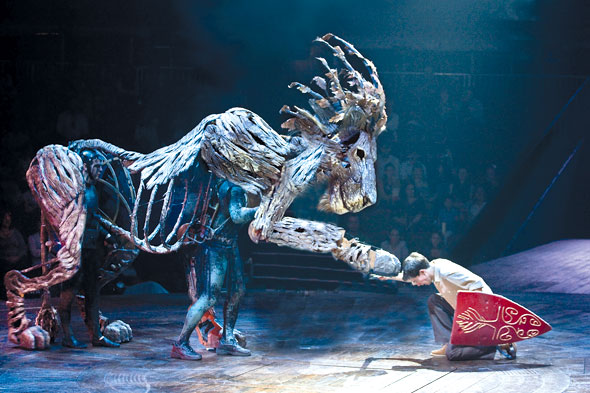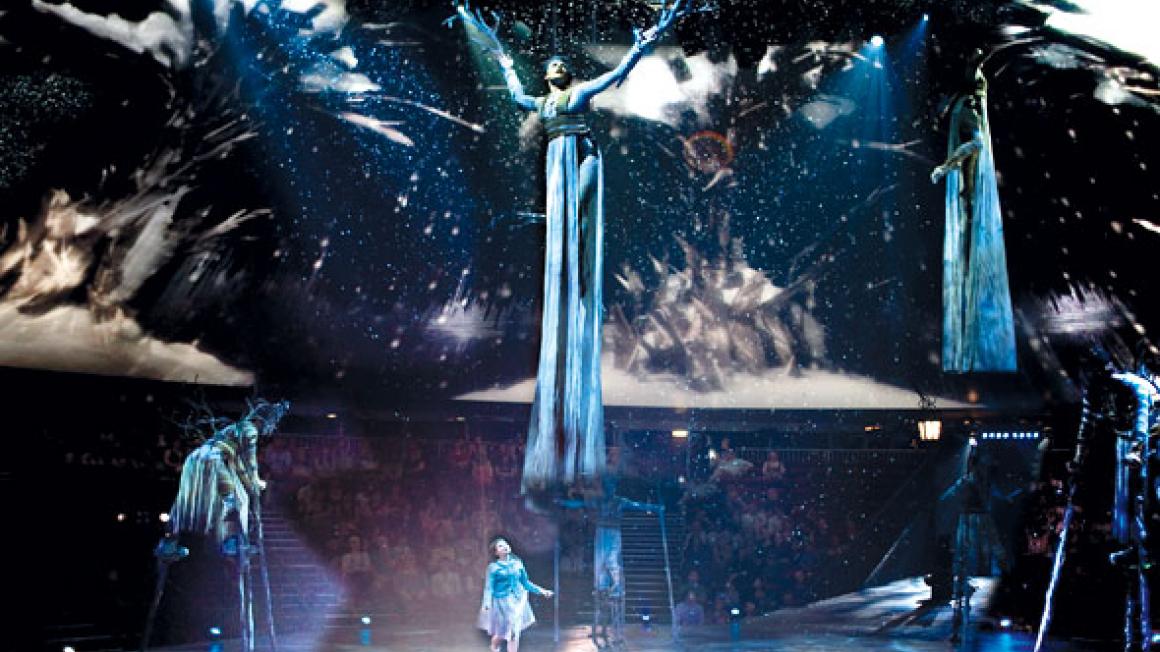Welcome to Narnia
In 2006, producer Charlie Burnell wrote on the back of an envelope: 'Peter Pan? Kensington Gardens?' Three years later, that pipe dream became a reality when a lavish production was mounted under canvas by his Threesixty company.
Emboldened by that success, which included a subsequent tour of America, he hit upon the idea of bringing the CS Lewis classic to the stage on the same site. 'I rang director Rupert Goold who, by coincidence, happened to be reading the books to his sixyear- old son, Raphael, at the time.'
Goold was instantly enthusiastic. 'The Narnia books were among the first I read on my own as a child,' he says. So it was pure pleasure for him to adapt LWW for the theatre and, although the production was a huge technical challenge, the burden has been eased by working with fellow director Michael Fentiman.
'Sending a little girl through a magic wardrobe,' says Fentiman, 'has to be done convincingly and staging the production in the round was a further complication.' As Goold points out: 'You don't have any sets to fall back on. Everything on the stage is exposed at every moment. On the other hand, it's been like playing with a big box of toys.'
The biggest toy – and the greatest challenge – was undoubtedly Aslan the lion. Tom Scutt is the talented young costume and set designer, winner of the Linbury Prize for Stage Design, to whom the task fell.
'Aslan is my biggest challenge and my biggest love,' he says; 'my best friend and my worst enemy.'
A week before the first technical rehearsal, Scutt came to the conclusion that Aslan had to be remade. 'He was simply too cumbersome, too heavy.'

So he was reconstructed by puppet maker Max Humphries, using a material called Plastazote, a kind of dense foam that can be carved and painted and which is much lighter.
'Aslan's a force for good but he is a force,' says Scutt. 'He's a wild animal, a latent power but a benign being. I designed him to be made out of what look like strips of wood, his mane a mass of leaves.' He also tried incorporating an animated mouth but it didn't work. Now you have David Suchet's disembodied, pre-recorded voice emanating from the animal's body.
Says Suchet: 'It's very rarely, as an actor, that you get to meet the character you're going to play in real life. I've used my lower register for him. He's a big boy, a very big lion.'
Aslan gets killed at one stage, although he's later brought back to life.
'And that,' says Scutt, 'was quite a challenge, too: to make a three-metre lion disappear in the round. There's nowhere to hide so we were faced with creating an illusion.
'The secret lies within the stone table on which he's killed, the deployment of video designer Chris Randall's wraparound projections – and more than that I'm not prepared to reveal.'
The wooden theme emanates in Tom Scutt's vision from the wardrobe in the home of the Professor (played by Brian Protheroe) to which the Pevensie children have been evacuated during the war.
'The main thread that runs through all the design is man's connection to wood: beginning with a tree growing in a fantasy kingdom and progressing to a wardrobe through which a girl will enter a magical world.'

Ruler of that world is the White Witch played with considerable relish by actress Sally Dexter. 'When the books were read to me as a child,' she says, 'I naturally associated myself with Lucy.'
She found clues to her character from the descriptions of the White Witch in The Magician's Nephew, the first in the seven-book cycle.
'But I now realise that the Witch does have some redeeming features. She stands up for the hags and the people of the toadstools, the wolves and the outcasts.
'Yes, she's fond of petrifying enemies but sometimes people need a little petrification, don't you think? I love the fact that I'm playing the baddie, the person who's chewing the furniture, as it were.'
Nor does young Jonny Weldon mind that, alone of the children, Edmund is the least reliable. 'His nose has been put out of joint by his older brother Peter, assuming the role of father figure when the children are evacuated. So when the White Witch tells Edmund he can have what he wants, it's a temptation too far.'
In the end, it is he who betrays the other youngsters at one point. 'I was coming off-stage the other day,' says Jonny, 'and I heard a child in the audience say to his dad, "I hate that boy".
So, job done!'
The Lion The Witch And The Wardrobe is at The Threesixty Theatre, Dial Walk, Kensington Gardens, London W8, until 9 September: 0844- 871 7693, www.lionwitchtheshow.com
A roaring production
- The production has cost around £2.5m to bring to the stage, to which another million can be added for tent, seating, foyer and decking.
- But is it a tent? Or a Big Top, perhaps? No, it's technically known as a tensile structure.
- With a circular, revolving stage 12 metres wide, none of the 1,480 tiered seats are more than 10 metres away.
- A 75-tonne crane takes 40 minutes to lift the dozen king poles, each weighing 2.5 tonnes.
- Around 300 tonnes of air are used to cool and heat the tent.
- Some 1.2 megawatts of power are needed to run the venue, the same amount as to power 1,000 homes.
- It takes three weeks to erect the tent and 40 trucks and nearly 100 people to move it to its next site.


